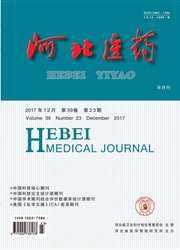

 中文摘要:
中文摘要:
目的探讨吗啡对糖尿病神经病理痛大鼠机械及冷刺激痛敏症状的影响。方法35只SD雄性大鼠(180~220 g)腹腔注射链脲佐菌素(STZ)制备成糖尿病神经病理痛模型,出现痛敏症状后,随机分为5组,采用von Frey测试针和冷板(5度)法,测量鞘内给予吗啡后不同时间机械缩腿阈值和冷刺激后的抬足次数(次/5min)变化。结果吗啡以剂量依赖方式提高糖尿病神经痛大鼠机械缩腿阈值、降低冷刺激后的抬足次数,给予吗啡后30 min,0.5、1.0、5.0μg剂量吗啡组的机械缩腿阈值明显增高,而冷刺激抬足次数分别为显著下降,分别与用药前和对照组相比,差异有统计学意义(P〈0.05)。结论吗啡能显著提高糖尿病神经痛大鼠的机械缩腿阈值,有效减少冷刺激的抬足次数,对神经源性痛具有明显的镇痛作用。
 英文摘要:
英文摘要:
Objective To evaluate the effect of different dose morphine on allodynia-like symptoms to mechanical and cold stimuli in rats with diabetic neuropathy. Methods Thirty-five male SD rats weighting 180 - 220 g were created the model of neuropathic pain, allodynia-like symptoms were induced by a single intraperitoneal injection of STZ(50 mg/kg) postoperation 10 days. Using series of yon Frey filaments and the cold plate(5℃), the responses to mechanical and cold stimuli in diabetic rats were evaluated by determining the paw withdrawal threshold(PWT) and brisk lifts of the treated hindpaw during 5min testing periods (BLH). Results Morphine increased in the value of PWT and decreased in BLH in dose-dependent manner. In morphine three groups(0.5,1.0,5.0 μg) 30 min after the application of morphine, the values of PWT were there was significant difference compared with NS control and before application of morphine ( P 〈 0.05) . Conclusion Morphine increases in the value of PWT to mechanical stimuli and decreases in value of BLH to cold stimuli significantly, it is of remarkable analgesia in diabetic neumpathy.
 同期刊论文项目
同期刊论文项目
 同项目期刊论文
同项目期刊论文
 期刊信息
期刊信息
